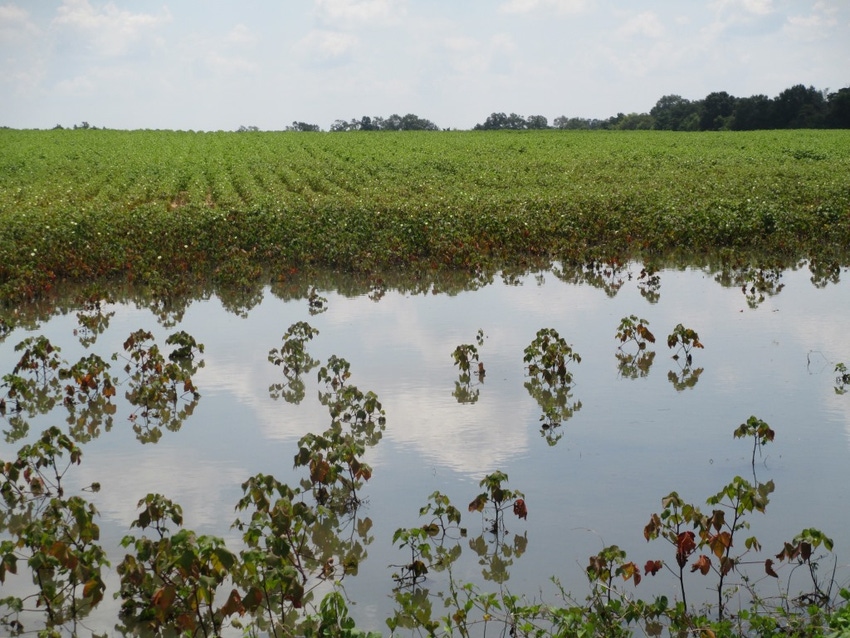August 13, 2013

Flooded and saturated fields continue to be a problem across the Florida Panhandle.
Not only does wet land prevent field operations, but it also has negative effects on plant growth, if the soils stay waterlogged for a long period of time.
Waterlogged soils prevent plant roots from getting the oxygen they need. Additionally, water and nutrient flow through plants stop, and plants quit growing. Given these conditions, many growers want to know what if anything they can do to make their crops recover.
There might be a few things:
Should you fertilize yellow cotton?
Much of the soil nitrates, especially in sandier fields, have been lost from heavy rains. If cotton is not past the third week of bloom, side-dress with 50-60 percent of normal rate of nitrogen. Foliar applications will generally not be adequate. Ground applications are preferred.
If your crop is mid-bloom or later, research shows that additional N will not increase yields. Unfortunately, any N applied after about the 4th week of bloom is a probably a waste of money.
What about foliar potassium on cotton?
Some foliar potassium may prevent disease if applied at the first sign of leaf spot (but not target spot). Soil-applied potash at planting is the best defense. However rains can cause potassium leaching. Additional potash prior to first bloom may be beneficial.
Will foliar N jumpstart my yellow peanuts?
The best thing for saturated peanuts is to get the roots some air. Once they have air, the nodules will likely start producing N again.
However, it may help to check nodule activity. Pull up several plants and cut the nodules. If they are dark red in the center, they are still active. If they are tan or brown, they are inactive.
Scott Tubbs, University of Georgia peanut agronomist, has said: “In the event of heavy nodule failure (greater than 50 percent of nodules inactive), a foliar application of ammonium sulfate may be necessary.”
What about fungicides?
Weather conditions are prime for leaf spot and white mold in peanuts. Be sure to use spray for both diseases and rotate chemistries.
For cotton, we need to spray for target spot on the 1st and 3rd week of bloom. It is unclear if sprays prior to bloom will work, but we know that spraying after the 3rd week does not.
Do not make more than 2 applications of Headline, Twinline or Quadris. This disease could easily develop resistance.
To read more advice on how to handle flooded fields in the Florida Panhandle, go here.
More from Southeast Farm Press
Ag industry concerned about legislation to restrict insecticide class
Corn prices not expected to improve as harvest begins
Realities of the kudzu bug threshold
Florida tobacco harvest caught on video
You May Also Like




